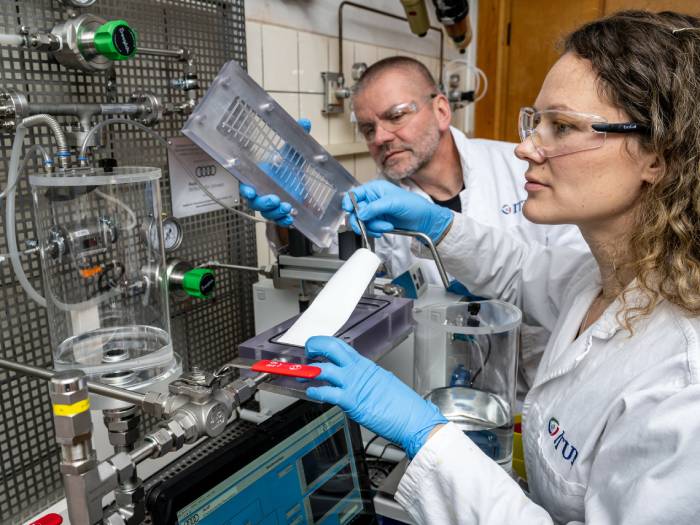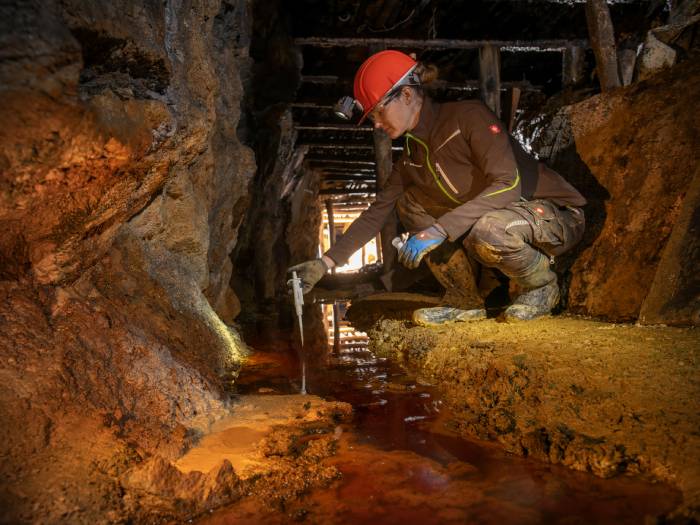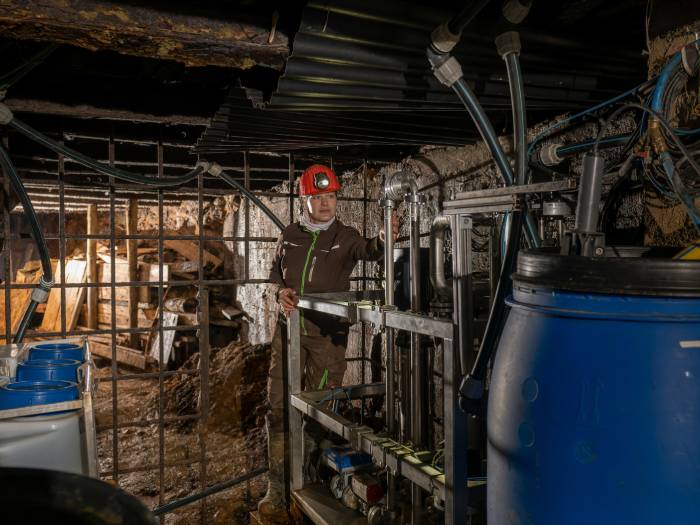Audi: sustainability right from the extraction of raw materials
The Audi Environmental Foundation promotes an innovative mining approach: the micro-invasive process and membrane technology increase sustainability and protect the environment.
Metallic raw materials are crucial for many of the technologies that will shape the near future, including electric mobility. However, they are exhaustible resources, which is why they are included in the European Union's list of critical raw materials. Elements such as indium, germanium, cobalt, lithium and the so-called rare earths have a high supply risk and are monitored by the EU to support the negotiation of trade agreements and to drive research, innovation and sustainable procurement.
Mining
Many of these raw materials are found in only a few countries worldwide, their geographical distribution is uneven and they are difficult to access. Moreover, in some cases they are present in such small quantities that extraction is unprofitable, not to mention that mining activities have a drastic impact on the environment.
For all these reasons, the Audi Environmental Foundation and the Institute of Thermal, Environmental and Resources Process Engineering at the University of Freiberg are working together to find alternative and sustainable methods for mining raw materials. It is a two-year research project that address the question of how to make mining more sustainable both through research in the laboratory and through experimentation in real operating environments.
Ecological and innovative extraction

The aim of this work is to extract hi-tech elements from ores without destroying the natural environment through large-scale drilling and blasting. To achieve this, microinvasive methods similar to those used in surgery are used, very different from those used in conventional mineral extraction.
In this way, heavy machinery is not needed, much less energy and fewer chemicals are used and the landscape is preserved. “The process is innovative and environmentally friendly, as major mining activities are largely avoided and even small quantities of ore can be extracted” says Rüdiger Recknagel, Director of the Audi Environmental Foundation, who goes on to explain how this process strengthens import independence and increases supply security.
In situ bioleaching

This process is known as in situ bioleaching and was developed and optimized in the laboratory before being tested under real conditions in the research mine at the University of Freiberg. Researchers drill small holes in the ore vein underground, then through leaching the valuable elements are dissolved from the ore with the help of microorganisms already present in the mine.
“The bacteria are like little miners that help transfer metal ions to a solution” explains Roland Haseneder of the Institute of Thermal, Environmental and Resources Process Engineering. In this way, some of the mineral components are dissolved and this step is combined with direct two-stage membrane treatment.
Circular economy
Finally, the plant separates the microorganisms and returns them to the leaching process in the spirit of a circular economy. “Working on site means there are no transport costs or logistics efforts” Haseneder concludes.
The aim of this process is to separate and enrich indium and germanium from a multicomponent mixture. These two metals are strategic and necessary for an array of hi-tech products such as flat screens, touch screens, navigation systems, fiber optic technology, computer chips, photovoltaic systems, and automotive bearings.
From theory to practice

In order to move from theory to practice and to be certain that the system worked, the experts took it to a depth of 147 metres, under conditions with over 90% humidity and dripping acidic water at 10 °C. In this scenario, the bacterial solution, enrichment with target elements, process parameters and the yield of target elements were monitored - the tests proved the efficiency of the system.
“We adjusted the pressure, flow rate and purification processes to significantly improve separation”, says Haseneder, who then remarks that separation efficiency for germanium was increased by 20% compared to the laboratory experiments.
A flexible process

In the future, this sustainable extraction process will also be used for other elements such as cobalt in other deposits. The innovative process is particularly suitable for the extraction of valuable elements both from low-grade ores with a low concentration of precious materials and from secondary raw materials; moreover, it can be implemented in existing mining sites using existing infrastructure.
According to Haseneder, this process could also be applied in other fields, such as urban mining; the long-term vision of the University of Freiberg is to implement microinvasive mining globally.
Audi Environmental Foundation
The Audi Environmental Foundation was founded by Audi AG in 2009 and supports research into new technologies and scientific methods for a livable future. Its mission is to help protect the environment by creating and promoting sustainable ways of acting. The foundation's work focuses on the advancement and development of environmentally friendly technologies, environmental education programmes and projects to protect nature.
Source: AUDI AG
VGI | Responsible OU: VP | Creation date: article date | Class 9.1
